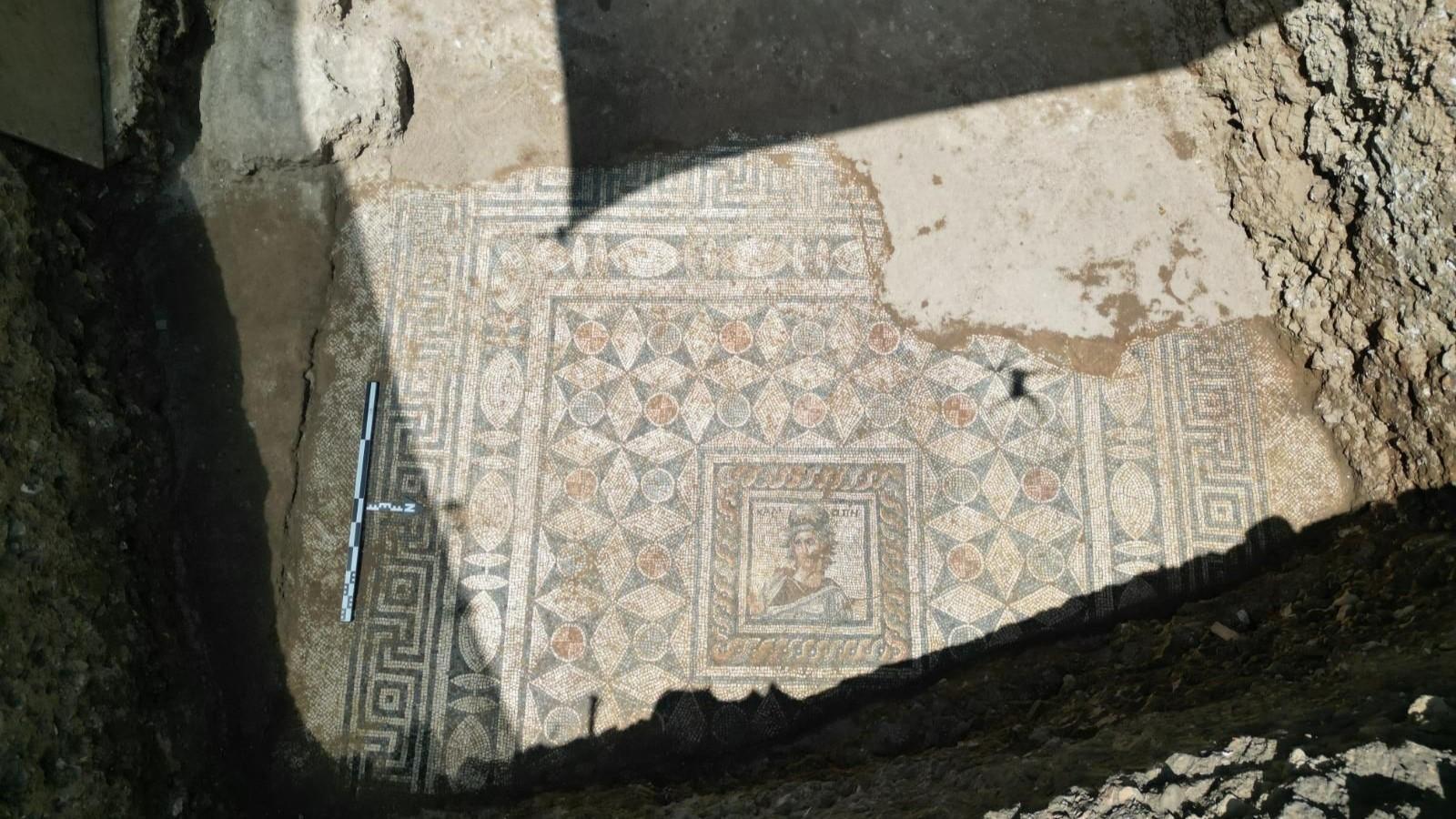
The Culture and Tourism Ministry announced that a mosaic floor, dating back to the 2nd century B.C., has been discovered in the ancient city of Side in the southern province of Antalya.
The artifact came to light during works carried out within the scope of the ministry’s Heritage to the Future Project.
“Excavation and restoration works that started in 2023 in the ancient city of Side within the scope of the Heritage to the Future project, which is implemented to protect Türkiye's historical and cultural heritage, research archaeological sites and promote these riches to the world, bring new discoveries and unique findings to light," the ministry said in a written statement.
"The ongoing restoration and archaeological studies in the Monumental Fountain area, located behind the city gate and land walls, reveal important findings from the dusty pages of history,” it added.
Noting that the mosaic floor was found in the excavation area, which has been expanded after the discovery of the aqueducts behind the Monumental Fountain, the ministry said: “It depicts Kalliope, the muse of epic poetry that inspired poets, in magnificent details. Dating back to the 2nd century B.C., this floor displays an impressive combination of ancient art and mythology. Frescoes, which are showing the aesthetic understanding and artistic richness of the period, were also discovered on the walls of the area where the mosaic floor was located."
"While the mosaic floor provides new information about the history of the ancient city of Side, it strengthens hopes that archaeological studies in the region will reveal many more secrets,” the ministry added.
The Cultural Heritage Road project that has been initiated in Antalya, includes the creation of a tour route, starting from Syedra in Alanya, continuing with Alanya Castle and Perge, and ending with the ancient cities of Phaselis and Olympos.
A minimum budget of 600 million Turkish Liras has been allocated for the project this year. The most important leg of the Cultural Heritage Road project is the ancient city of Side.
A team of 150 people, including archaeologists, architects, restorers and workers, has been formed for the project. Work was carried out at 20 locations for 12 months, and 57 projects were completed. As a result of works last year, important historical buildings, from ancient roads to the aqueduct and from the customs building to the Gymnasium were restored.